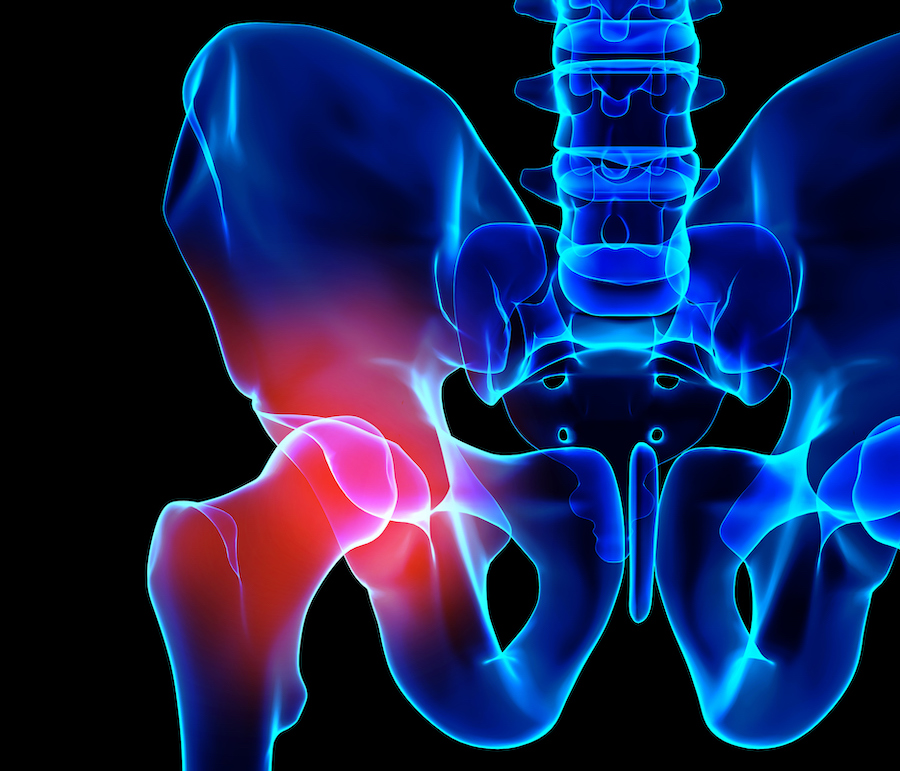From faster recovery times to new materials: 7 ways hip replacement surgery has advanced
At the age of just 31, Andy Murray is considering more surgery on the painful hip that looks set to end his stellar tennis career.
As a top-level athlete, who will have pushed his body to the limit and has racked up years of demanding training, Murray’s case is obviously a little different to most people’s – but he could be joining thousands of people who undergo hip surgery in the UK and Ireland each year.
Hip surgery is carried out for a number of reasons, including injuries and fractures, and problems arising from wear and tear or arthritis. Murray has been struggling with his hip for a number of years now and underwent surgery last January – only to announce, in a very emotional statement earlier this month, that he’s in a “lot of pain” and plans to retire soon.
Although Murray hasn’t discussed the exact nature of his hip problems in depth, the topic has attracted a lot of discussion and one suggestion is that he may have hip impingement – a common problem in high-impact sports involving the ball and socket joint.
“Hip impingement is common in young athletes with high-intensity use, such as Andy Murray. In these patients, there is usually extra bone growth along the hip joint as a result of high-level use. This extra bone growth results in distortion of the shape of the hip joint, leading to impingement. This can cause severe symptoms and significant effects on performance – sometimes career-ending,” says consultant orthopaedic surgeon Mr Panos Gikas, who works at HCA Healthcare’s Lister Hospital.
This may sometimes be treated with hip resurfacing surgery, where the ball is smoothed and covered with a metal cap, and a layer of metal is also placed within the pelvic socket. But Gikas says if the problem is very severe, a hip replacement may be the last resort.
Although most hip replacements are carried out on people aged 60-80, adults of any age can potentially have the surgery. Traditionally, the procedure has been associated with invasive and painful techniques and long recovery times – but Gikas says advances in surgical techniques and technologies have revolutionised hip replacement surgery. New methods offer much more tailored treatment, with less invasive and quicker procedures, greater precision, shorter recovery times and minimal post-surgery discomfort, he adds.
Here, Gikas outlines seven of the key advances in hip replacement surgery…
1. More choice
Gikas explains that knowledge and understanding around hip replacement surgery has moved on a great deal, and the relevant technology has also advanced significantly, resulting in more choice for both surgeons and patients. In the past, total hip replacement surgery required a long incision at the side of the hip to gain access and view the hip joint. This required the surrounding muscles to be cut and detached from the hip.
“Today, surgeons use novel techniques and surgical approaches that allow better functional outcomes, as well as improved longevity of the hip replacement and faster return to normal activities postoperatively,” says Gikas. “Patients can today carefully research and identify which surgeon and technique is going to be best for them. It provides an element of choice which historically patients didn’t have.”
2. Less pain
One of the most effective techniques for minimal pain is anterior muscle sparing hip surgery, says Gikas. The anterior approach involves accessing the hip joint from the front of the hip, avoiding the need to cut through the muscles around the hip. Postoperative pain is less, as there’s no injury to the soft tissues.
3. Custom-made implants
Implants may be custom templated before surgery, to ensure the optimum fit with minimal bone loss, leading to improved range of movement afterwards.
4. Cement alternatives
During hip replacement surgery, the head of the femur (thigh bone), also called the ball, which forms half of the hip joint, is removed from its socket, and a new artificial ball and socket are fixed in place. Gikas says that traditionally, acrylic cement has been used to fix these components in place – but now there’s another option.
“Although cement is still the preferred option in certain patient groups, it’s becoming more common, especially in younger and more active patients, for the hip components to be inserted without any cement. Bone is a living substance and will continue to grow and bond itself over time if it’s strong and healthy. So, instead of cement, surgeons are simply roughening the surface of the implants to allow the bone to grow onto the prosthetic surface naturally.
“Encouraging the materials to bond to bone naturally is preferable, as it helps to ensure better results and longer lifetime of the hip replacement,” he explains.
#NHSFacts The first hip replacement operation was carried out in 1962 – today the NHS performs around 77,000 annual hip operations. #NHSFacts #NHS70 #15days https://t.co/u8tANDhZ7u pic.twitter.com/ikX5UZEQ2X
— NHS England-MidsEast (@NHSEnglandMidE) June 20, 2018
5. Stronger implant materials
Traditionally, a metal alloy or plastic prosthesis would have been used in hip replacements, but Gikas says one of the biggest advances in the surgery is the implant materials used. New materials have been developed, such as ceramic and special plastics called cross-linked polyethylene, allowing high durability and prolonging the lifespan of the prosthesis, therefore reducing the frequency of revision surgery.
6. Robotics
Accurate positioning of the ball implant is key to a successful hip replacement, says Gikas, and for this reason, orthopaedic surgeons are now using techniques such as robotics or patient-specific instruments designed for the unique anatomy of each patient. “This helps ensure implants are aligned to the patient’s unique anatomy with as much precision as possible, allowing better function and lower risk of complications,” he says.
7. Faster recovery times

Recovery times can be much faster now
Generally speaking, the length of hospital stay for hip replacement surgery varies depending on the technique used, and Gikas says that with traditional posterior operations, patients may need to stay in for three to seven days. Full recovery can then take six to 12 weeks, due to precautions that need to be observed, such as not crossing the legs, or sleeping on your side.
But with the modern anterior muscle sparing approach, hospital time is significantly decreased, with the average length of stay between 48-72 hours. In some cases, patients have gone home as quickly as day one after surgery, and will usually be back to normal within two to four weeks – driving, going to work, and carrying out normal day-to-day activities.
“After anterior muscle sparing surgery, patients can get up and start walking much quicker than in other approaches to the hip,” says Gikas. “Because the muscle which envelopes the hip remains intact, return to normal function is much faster and the risk of dislocation is negligible. Not only does this mean less pain and a quicker discharge from hospital, it also means there’s no limitations postoperatively, unlike traditional approaches, where patients have certain restrictions after their op.”
The Press Association
Latest posts by The Press Association (see all)
- Could brisk walking boost your heart? - April 16, 2025
- Best spring-to-summer plants to fill the colour gaps - April 15, 2025
- Catherine tells how ‘spiritual’ connection with nature gives her peace in busy world - April 15, 2025
- Why weeds are worth cultivating – and eating - April 14, 2025
- 5 top tips for cleaning your tech, from phones to laptops - April 14, 2025




















